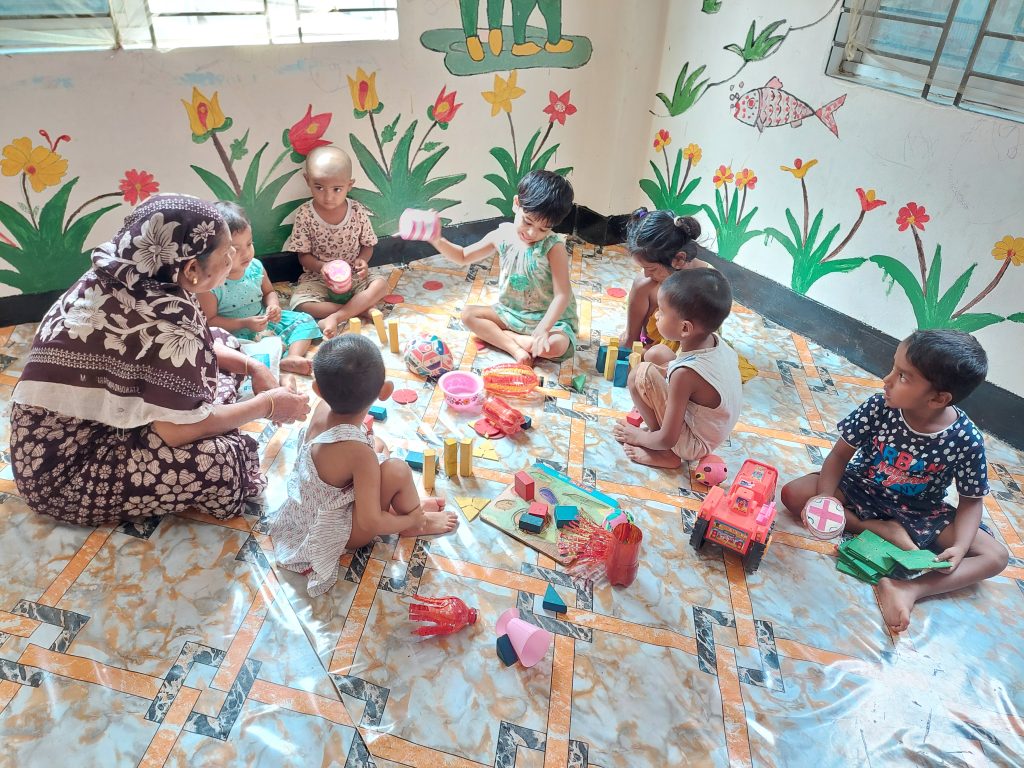In today’s instant-gratification world where a snack, a show, or a toy is just a click away patience in children is becoming a rare virtue. Patience in children is imperative to adapt in new and strugling situation and to grow and thrive.

Table of Content
- Why Patience Matters in Childhood
- Understanding Why Children Struggle with Patience
- Effective Ways to Enhance Patience in Children
- Patience Grows with Practice
- Final Thought
But patience is not something a child is simply born with or without. It is a life skill that can be taught, modeled, and nurtured over time. Developing patience helps children manage frustration, build better relationships, focus on long-term goals, and cope with everyday challenges. So, how can we help children grow in this essential area?
Why Patience in Children Matters in Childhood
Patience is more than just waiting quietly. It involves:
- Delaying gratification
- Tolerating frustration
- Managing impulses
- Staying calm under pressure
Children who learn patience early are often better equipped for academic success, emotional well-being, and social harmony.
Understanding Why Patience in Children is a Struggling Factor
- Underdeveloped Brain Regions
A child while growing, the prefrontal cortex of brain is still developing. This part of the brain is responsible for self-control and planning and it will continue to maturing throughout childhood. Younger children are biologically wired to be impulsive. - Lack of Practice
Children naturally live in the “now.” If they haven’t been encouraged or allowed to wait or reflect, they won’t develop patience on their own. - Overstimulation & Instant Gratification
Constant access to fast-paced media, quick answers, and instant rewards conditions the brain to expect immediate results, making patience feel unnatural.
Effective Ways to Enhance Patience in Children
- Model Patience Yourself
Children mirror adult behavior. If they see you handling delays, frustrations, or challenges calmly, they’ll learn to do the same. Use phrases like:
“It’s okay, let’s take our time.”
“Although waiting is tough thing, but we should do this collectively.”
- Play Games That Involve Waiting
Games like Simon Says, Red Light/Green Light, puzzles, or board games teach children to wait their turn and follow rules practical exercises in self-regulation.
- Use Timers and Visual Cues
Help them understand the passage of time. Use sand timers, countdown clocks, or a kitchen timer to show how long they need to wait for something.
Example:
“We’ll go to the park in 10 minutes let’s set the timer.”
- Practice Mindfulness and Breathing
Simple deep-breathing exercises, stretching, or short mindfulness sessions help children calm their bodies and train their brains to slow down.
Try:
“Smell the flower (inhale)… blow out the candle (exhale).”
- Tell Stories About Patience
Share stories or books where characters show patience and are rewarded. This builds an emotional connection to the value of waiting.
- Teach Delay of Gratification
Start small. Offer choices like:
“Do you want one cookie now, or two cookies if you wait 10 minutes?”
This classic “marshmallow test” concept helps children link patience to positive outcomes.
- Praise Efforts to Wait
Positive reinforcement works wonders. Say things like:
“I noticed you waited patiently great job!”
“That was hard, but you stayed calm. I’m proud of you.”
- Break Big Waits into Steps
Long waits can be overwhelming. Break them into manageable chunks with small activities in between:
“While we wait for dinner, let’s draw a picture.”
- Give Responsibility
Chores, gardening, taking care of a pet, or helping cook these tasks involve step-by-step work and delayed rewards, which naturally build patience.
Patience in Children Grows with Practice
While we are practicing patience, it grows simultaneously as like muscle develop stronger with exercise. But just like learning to walk or talk, it requires encouragement, repetition, and understanding. When parents and caregivers create environments that support waiting, delay, and emotional regulation, children grow more confident and capable of handling life’s inevitable delays and frustrations. If want to learn more Click here.
Final Thought on Patience in Children
Raising a patient child does not mean eliminating all impulsive behavior it means helping them learn how to handle their impulses in healthy ways. With love, structure, and a few well-placed pauses, patience becomes not just a skill but a lifelong strength. If you need more information Click here.
Pingback: Constraints of Child Development: Challenges and Solutions - My Blog | My BlogMy Blog
Pingback: Understanding Child Behavior and the Responsibility of Parents – ECD Explorer